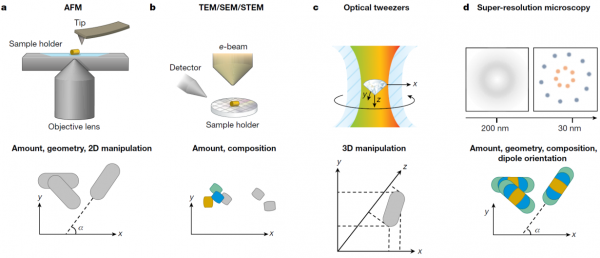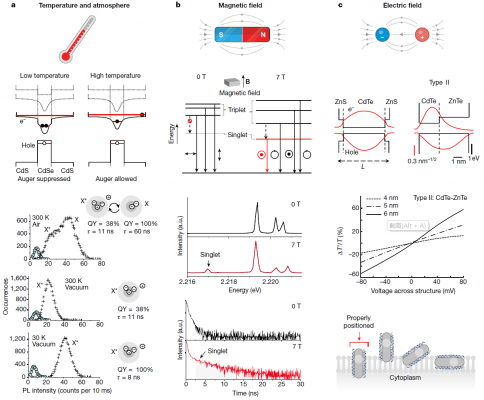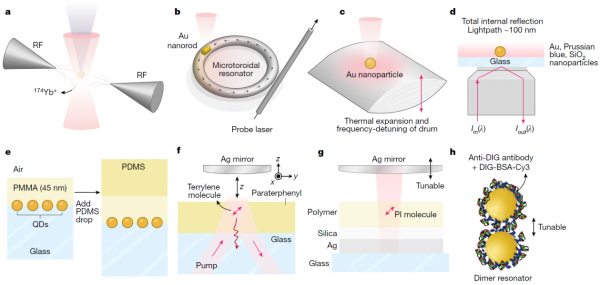Nanoscale technology is supporting more high-tech devices used in modern society than currently appreciated. The development and manipulation of nanostructures have developed rapidly in recent years and allowed for advances such as imaging and sensing devices with touch screens and high-resolution light-emitting diode (LED) displays.
Department of Biomedical Engineering (BME) Chair Professor Dayong Jin was part of an international collaborative research team that was published on March 4 in the high-impact journal, Nature. Their review article was titled, “Single-particle spectroscopy for functional nanomaterials.”
The piece focuses on the luminescent nanoparticles central to many advances with the opportunities and challenges for these technologies to reach full potential. It sought to understand how single nanoparticles behave, so scientists can develop new tools that support a broad range of modern applications such as personalized medicine, cybersecurity, and quantum communication.

The development of single-molecule measurements and the rapid progress in optical microscopy have made it possible to observe the fluorescence of single photons. Advances in this field could lead researchers to discover the underlying photophysics from the nanoscale – with “plenty of room at the bottom.” The article found many promising material candidates for a wide range of commercial and industrial applications, from quantum dots to carbon dots, fluorescent nano-diamonds, and nanoparticles fabricated from obscure minerals such as perovskite.
There are increasing challenges as scientists step ever closer to optimal nanoparticle design, mainly as there is an increasing demand for smaller and more efficient nanoparticles with desirable characteristics.

The research team focused on the development of uniform nanoparticles that are just a few nanometers in size. It is a significant challenge, along with controlling their size and shape, as new knowledge is needed about nanoparticle surface chemistry to better understand these properties, as well as their optical properties.
In a dynamic field such as nanoparticles, there is seemingly no limit except the ability of science and engineering to integrate their knowledge and skill. The paper examines opportunities for continued fundamental research that pushes at the cutting-edge of nanoscale technologies.

Professor Dayong Jin believes that there will be a future where nanoparticles can be used to develop biomedical signatures that answer personalized drug therapy questions from a single drop of blood.
He highlighted the point that everyday technology such as smartphones and touch screens are now the result of decades of research by scientists and engineers trying to answer fundamental scientific questions.
Professor Dayong Jin joined SUSTech in January 2019 and quickly established a research team of more than 40 people. The laboratory has built inorganic rare earth luminescent materials, organic rare earth complexes, super-resolution imaging, and time-resolved imaging research platforms.
Dr. Jiajia Zhou from the Institute for Biomedical Materials and Devices (IBMD) at the University of Technology Sydney (UTS) was the first author of the paper. She worked with Dr. Alexey I. Chizik from the Third Institute of Physics at the Georg-August University of Göttingen, Prof. Steven Chu of the Department of Physics at Stanford University and SUSTech Chair Professor Dayong Jin from the Department of Biomedical Engineering. All four authors were correspondent authors. The scholars acknowledge support from the Australian Research Council (ARC), the Discovery Early Career Researcher Award Scheme, the Shenzhen Science and Technology Program, and the Australia China Science and Research Fund Joint Research Center for POCT.
Article link: https://www.nature.com/articles/s41586-020-2048-8
Proofread ByChris Edwards
Photo ByDepartment of Biomedical Engineering